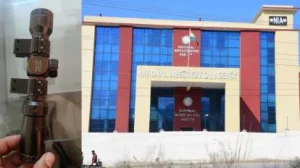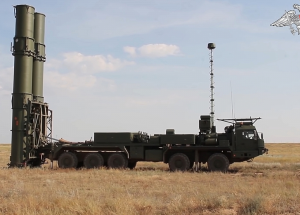Indian Space Research Organization (ISRO) is keen on participating in a planetary defence mission in space ahead of a close shave for Earth with the Apophis asteroid on April 13, 2029, ISRO chairman S Somanath and senior scientists said at an international workshop held in Bengaluru on Wednesday to mark Asteroid Day 2024.
India Keen On Asteroid Defence Mission
Why In News
- Indian Space Research Organization (ISRO) is keen on participating in a planetary defence mission in space ahead of a close shave for Earth with the Apophis asteroid on April 13, 2029, ISRO chairman S Somanath and senior scientists said at an international workshop held in Bengaluru on Wednesday to mark Asteroid Day 2024.
- The“When Apophis comes in the year 2029, we should be able to go and meet this asteroid when it is very close to Earth. It is a one-time opportunity for humanity to work with an asteroid. India should be part of such efforts. It is yet to be decided in what way we should participate,” the ISRO chairman Somanath said at the Asteroid Day event.
What Is Asteroid Day
- Asteroid Day is observed every year by the space community on June 30 on account of a huge air blast from an asteroid flattening 2,200 sq km of forest in Siberia, Russia, on June 30, 1908. Asteroids are hypothesized to have caused the extinction of dinosaurs. The event to mark International Asteroid Day was held on Wednesday at ISRO.
Observing Apophis
- “In 2004, our observatories were able to see an object that was 340 meters in size. The object was coming close and suddenly our people calculated with the available data that the threat of this object coming and impacting the Earth is more than one in 100 probability, which is a high risk,” Anil Kumar said.
- “The object is known as Apophis, and its sphere is 360 days, which is almost one Earth year, and as a result, it can be seen often in the vicinity of Earth,” he said.
- “On April 13, 2029, it will come to a distance of around 32,000 km away from Earth. It is assumed to come back in 2036 in April. It will be further away from Earth in the distance. There is a fear that if there is any change in gravity, there is a chance it will have an impact on Earth in 2036,” the ISTRAC official said.
ISRO’s Plans For Apophis
- ISRO is looking at working in some capacity to study the asteroid Apophis when it is 32,000 km away from Earth in 2029 in order to prepare for planetary defense efforts to prevent the asteroid from crashing onto Earth, ISRO scientists said.
- “It could involve putting an instrument on the JAXA (Japan Aerospace Exploration Agency), ESA (European Space Agency), and NASA (National Aeronautics and Space Administration) joint Apophis asteroid mission, or we may join by providing support in some manner, or we may do something else. We must provide whatever support we can in the mission in order to participate and learn. We are eager to spread our knowledge,” ISRO chairman Somanath said.
Learning from NASA’s DART mission
- ISRO chairman referred to NASA’s DART mission in 2022, which facilitated the change of trajectory of an asteroid in deep space. “When there is information that an asteroid will strike Earth in a couple of years, then a large amount of euphoria will rise and there will be a demand to act. It would be better if we act when there is no threat. This is why there are many missions to go near asteroids and understand them. One of the missions is the DART mission,” Somanath said.
- “It is a mission to show that it is possible to impart a little bit of a change of trajectory to an asteroid and cause it to depart from its course. If we can change the trajectory of an asteroid, it will miss Earth by a whisker. That will be good enough to save the Earth,” he said.
NASA’s Double Asteroid Redirection Test (DART)
- NASA’s Double Asteroid Redirection Test (DART) showed that a spacecraft’s kinetic impact with its target asteroid, Dimorphos, had successfully altered the orbit of the asteroid. “This marks humanity’s first time purposely changing the motion of a celestial object and the first full-scale demonstration of asteroid deflection technology,” NASA stated in 2022.
India’s Future In Planetary Defence
- The As a major spacefaring nation with the capability “to carry out complex missions of taking a spacecraft from one place to another,” India “will one day be in a position to handle an asteroid mission, land on an asteroid, and possibly carry out a planetary defence action to protect Earth,” Somanath said.
- “This knowledge must be used and we should start by collaborating with other nations that have already started work in this area. For example, there is JAXA who have gone to an asteroid and collected samples. There are also many other agencies,” he said.
- Associate director of ISRO’s telemetry, tracking, and command centre (ISTRAC), Anil Kumar A K, said that “ISRO has also wanted to be part of the worldwide planetary defence programme in collaboration with other agencies.”

























